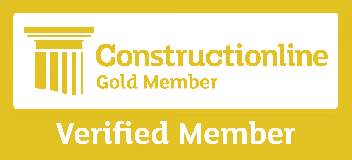We offer nationwide coverage for LOLER inspections on all types of passenger lifts, goods lifts and platform lifts.
The Lifting Operations and Lifting Equipment Regulations 1998 often shortened to LOLER have stringent regulations for the safe use of any lifting equipment. LOLER inspections are required every 6 months on passenger lifts and every 12 months on goods lifts. These are legal requirements that must be followed to the letter.
Regulation 9 of LOLER states that all lifts that are used in work activities or everyday use are required to be thoroughly examined by a competent and qualified person at regular intervals. These laws apply to lifts and hoists that are used to lift people or loads.
Dutyholders
If you own lifts or if you are someone who has a role of responsibility for the safe operation of a lift used in a workplace, such as a facilities manager or supervisor, you are classed as a ‘dutyholder’ under LOLER regulations.
Being a ‘dutyholder’ means that you have a legal responsibility to ensure that the lift is thoroughly examined and that it is safe for use. (If you are the owner of a lift used primarily by members of the public, you may also happen to find this guidance helps you to comply with more general health and safety legal duties under the Health and Safety at Work etc Act 1974.)
What is a through examination
A thorough examination is a highly detailed examination of the lift and all its associated equipment by a qualified person. The aim of this examination is to detect any faults/defects which are dangerous or have the potential to be. The competent person will report any faults and issues to the dutyholder if they think it is necessary they may report it to the the enforcing authority (the Health and Safety Executive or local authority) this ensures that appropriate remedial action can be taken to fix any issues.
For the extent of the LOLER examination to be determined, the competent person will review the risks, noting factors such as where the lift will be used, how regularly the lift is used, age and condition, the weight of loads to be lifted, etc.
A thorough examination has the chance to include some testing, It this is considered necessary. The competent person will normally determine what tests are needed, taking account of the relevant guidance and standards (see Further information), and dutyholders are advised to insist on this approach.
Thorough examination may also be supplemented by inspection. Inspections should be occur at suitable intervals between thorough examinations and may be done ‘in-house’ by a employee who is qualified. Inspections would typically include visual and functional checks, eg that the alarm interlocks operate correctly and lift doors cannot be opened from the landing side
During a thorough examination the following should be inspected and examined
- Landing and car doors and their interlocks
- Worm and other gearing
- Main drive system components
- Governors
- Safety gear
- Suspension ropes
- Suspension chains
- Overload detection devices
- Electrical devices (including earthing, earth bonding, safety devices, selection of fuses, etc)
- Braking systems (including buffers and overspeed devices); and hydraulics
Responsibilities
The Dutyholder
The responsibilities of the duty holding include,
- Maintaining the lift so that it is safe to use.
- Selecting and instructing the competent person ensuring that the lift is examined at statutory intervals (every 6 or 12 months) or in accordance with an examination scheme drawn up by a competent person.
- Keeping the competent person informed of any changes in the lift operating conditions which may affect the risk assessment.
- Making relevant documentation available to the competent person, eg manufacturer’s instructions and maintenance records.
- Acting promptly to remedy any defects, ensuring that all documentation complies with the Regulations; and
record keeping.
The Competent Person
The Responsibilities of the competent person include,
- Ensuring they do not miss any defects, and making sure the lift is safe after the LOLER examination.
- Making sure they do the examinations every 6 to 12 months.
- Sending a detailed report of their findings (they are legally required to do this).
- Notify you of all defects and recommend actions you should take.
What you should do after the LOLER examination
If you are notified of a serious and significant defect you must immediately take the lift out of service until the fault has been addressed. If you do not take the lift out of operation you will be in breach of the law.
The competent person may also notify you of defects which need to be made good within a certain timescale. In this case, you should take steps to have the defective equipment repaired or replaced within the specified time, and not use the lift after that time unless the defect has been satisfactorily remedied.
Nationwide Lift Services are a privately owned lift company based in Stoke on Trent, we have been in the lift industry for over 30 years and we work closely with a third party insurance company who can complete your LOLER inspections on our behalf which helps continuity of a high level of service.
Please contact us on 01782562000 or info@nationwideliftservices.co.uk


